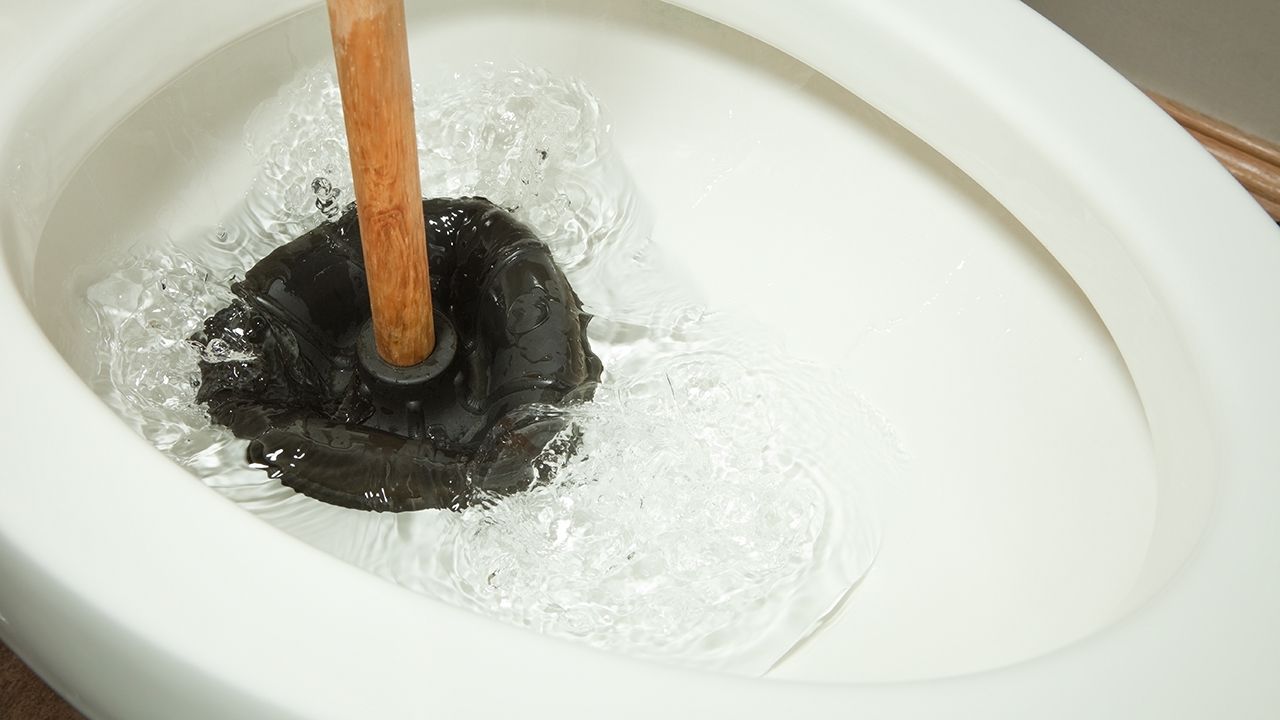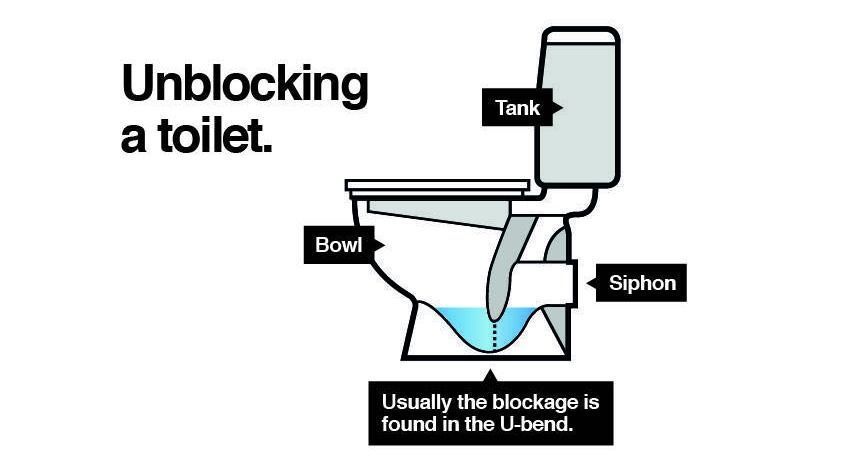How to Unblock a Toilet

Toilet blockages can be among the most stressful and unpleasant home maintenance problems to encounter – not just because of the unhygienic nature of the issue, but also because it’s a situation that usually needs to be addressed in a hurry, because no home can be without a working toilet for long.
As such, it can be extremely useful to have a basic understanding of how to remedy some of the most common problems that can occur, without needing to call in a professional.
What Causes a Blocked Toilet
If your toilet is failing to flush, then it’s likely that there’s something lodged in the pipework, usually in the U-bend, that needs to be either pulled out or pushed through the system.
The most common causes of blocked toilets are the flushing of excessive quantities of toilet paper, sanitary product, nappies and wet wipes. In short, flushing anything that isn’t designed to be flushed (and flushing too much of things that are) can lead to a blockage.
Sometimes accidents happen, and sometime blockages that occur in toilets are outside of your control. A clogged toilet might be indicative of a plumbing issue or even a problem outside of the house. In this instance, you’ll most likely need to get a professional in.
Unseating a stubborn blockage can be a challenging task, but the process will go much more smoothly if you follow a few simple steps.

Step 1: Get yourself protected
Whatever your approach to the problem, it’s most important to ensure that the contents of a blocked toilet do not come into any unnecessary contact with you or your surroundings.
As such, rubber gloves are a must, and protective glasses or goggles are also recommended. Additionally, covering the floor with spare towels or an old sheet will help to protect the other furnishings from any contamination.
Step 2: Turn off the water supply
Dealing with a toilet blockage can be unpleasant work, so you’ll want to avoid the risk of a nasty flood by turning off the flow of water to your toilet.
This can be done from inside the cistern by propping up the float lever that triggers the cistern to refill. You can also turn off the water supply via the valve that is usually found behind the toilet at the wall.
Step 3: Fish out any known blockages
If you know that an item other than waste matter – such as a phone or a child’s toy – is responsible for blocking the water flow, then this needs to be retrieved, or else it’ll inevitably get stuck again somewhere else in the system.
In most other cases, the blockage will either be made up of faeces or an excessive amount of toilet roll. In these instances, it’s much more advisable to push the obstruction through the system, as it’ll disintegrate once it’s broken up.
Step 4: Try DIY Unblocking Solutions
Once you’re committed to clearing the blockage manually, there are a few common methods that can deliver good results with a minimum of expertise or specialist equipment.
The most obvious approach would be to use a plunger to create a vacuum over the toilet bowl opening, before applying air pressure to unseat or break up a blockage further down the pipe. However, a wire coat hanger can also do a similar job – by reshaping it into a single long wire, you can reach quite far along the pipe to push the blockage clear, as long as you’re careful not to scratch anything.
Pouring hot water or cleaning chemicals into the bowl can also help to dissolve the obstructions, but be aware that this will only work against blockages that aren’t too serious, so don’t try this if the toilet bowl is already overflowing.

Step 5: Bring out the longer tools
If at first you don’t succeed, it might be that the blockage is further along the system than you can reach with a plunger. In this case, it might be better to find a longer implement.
One tool that may be useful in this situation is a toilet auger. This gizmo allows you to reach the blockage if it’s further into the toilet pipework than the U-bend, and to either pull it out or push it through accordingly.
Step 6: When all else fails, call in the plumbing experts
If you’ve exhausted all possible outlets and your toilet is still blocked, it may be that drain rods need to be used to remove a blockage that’s much further through the pipework than you can manually reach.
When you’ve reached that point, it may be time to give the experts a call to come and help you out. If you choose Lanes, you can rest assured that you won’t need to pay a callout fee – we only charge for the work we do, and we have a well-established track record of handling toilet blockages with a minimum of fuss.
Find out more about our domestic drain unblocking services, or give us a call on 0800 526 488.








